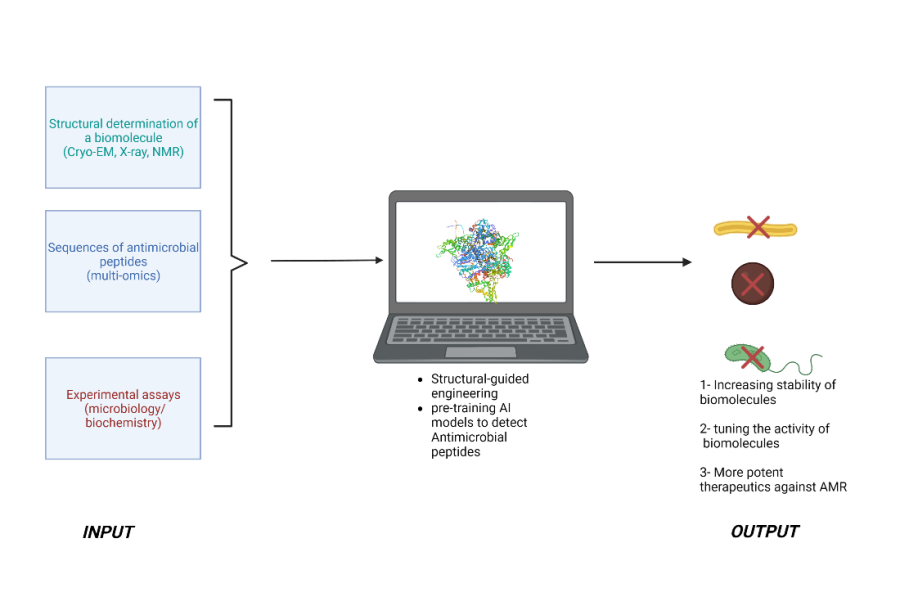Antimicrobial resistance (AMR) is one of the biggest threats to global health. According to a recent study, bacterial AMR was linked to 1.27 million deaths worldwide in 2019 – equating to 3,500 people dying every day as a result of antibiotics failing to treat once-curable bacterial infections. To prevent this from happening, we need to develop therapeutics that target bacteria in innovative ways.
Outsmarting a pathogen requires in-depth understanding of where the weak points lie in a bacterium. The wealth of raw data, thanks to multiple-omics studies, entails additional assistance to analyse, curate, and model the vital pathways that could arrest bacterial infections. This is when smart algorithms and powerful machine learning join us to unravel the wonders of bacterial physiology and assist us locating where to hit the pathogen with a drug or a vaccine.
For half a century, thousands -if not millions- of high-throughput screenings have not found any lead to a new compound against Gram-negative bacteria. Until recently, a glimpse of hope arose from a sugarcane bacterial pathogen called Xanthomonas albilineans, which secrets an antibiotic peptide, albicidin.
In the early 1980’s, albicidin was shown to inhibit bacterial DNA synthesis via targeting DNA gyrase, an enzyme important in DNA replication. What was exciting about this discovery was that albicidin was shown to be more potent than most DNA gyrase inhibitors, such as the last class of broad-spectrum antibiotic, flouroquinolones. But why did clinical realisation not occur? This was mainly due to scientists not knowing the structure of albicidin. Solving the structure of biomolecules is usually accompanied by understanding how they work. Smart algorithms then help us to visualise this process and locate important functional groups that make this biomolecule active. This is an important step in designing more stable, efficient, and selective therapeutics.
Last month, the structure of albicidin was solved. The understanding of how albicidin works at a molecular level allowed the design of more potent derivatives which will be tested in future studies for their suitability to treat serious AMR. In another breakthrough study, scientists managed to create an AI based model to identify molecules (similar to albicidin). This was achieved by pre-training the model and then fine-tuning with thousands of antimicrobial peptides from benchmark database. This allowed the model to extract structural and functional information from the input and identify which ones has antimicrobial activity.
Biology, with all its diversity, offers a variety of biomolecules that possess antimicrobial properties. The full potential of AI has not been realised yet. However, it is clear that it plays an instrumental role in understanding how we can identify these biomolecules.
Behind every laboratory at LSHTM there are scientists working relentlessly to find innovative ways to diagnose, prevent, or treat a disease. Find out how Professor Anil Koul is leading a major discovery against a notorious pathogen, Mycobacterium tuberculosis.
Our postgraduate taught courses provide health practitioners, clinicians, policy-makers, scientists and recent graduates with a world-class qualification in public and global health.
If you are coming to LSHTM to study a distance learning programme (PG Cert, PG Dip, MSc or individual modules) starting in 2024, you may be eligible for a 5% discount on your tuition fees.
These fee reduction schemes are available for a limited time only.

